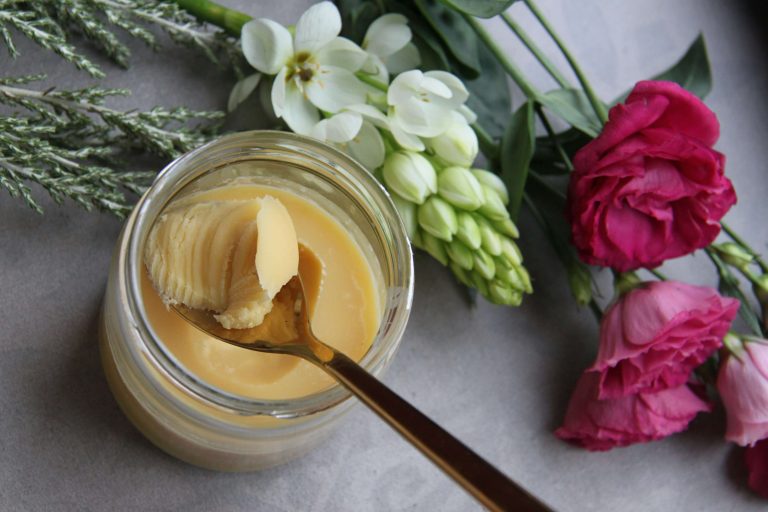Butter may be the hero of most home kitchens, but when it comes to cooking that demands heat, flavour and longevity, there’s a new star worth a spot next to your salt and pepper – ghee. It’s rich, aromatic, and far more versatile than many realise. Once you start using it, you’ll wonder how your pan ever sizzled without it.
Read more: Butter vs. Margarine: What’s the scoop?
What exactly Is Ghee?
Ghee is butter that’s been gently simmered until all the water and milk solids separate, leaving behind a clear, golden fat with a toasty, nutty aroma. This process not only concentrates its flavour but also makes it lactose-free and shelf-stable. The result? A smooth, amber liquid that brings warmth and depth to any dish.
One of ghee’s biggest strengths lies in its resilience. While butter starts to smoke and burn around 175°C, ghee stays steady up to 250°C. That means perfect roasts, beautifully browned meats and golden potatoes without the bitter taste of burnt butter. It’s the secret weapon for stir-fries, searing and deep-frying – anywhere you need a fat that can take the heat.
All about flavour
If butter is comfort, ghee is luxury. It carries a deep, slightly caramelised taste that enhances both savoury and sweet dishes. Drizzle it over popcorn, toss it through warm rice or melt it into pasta for an instant flavour upgrade. Even a spoonful over roasted vegetables transforms them from simple to spectacular.
Don’t stop at the stove. Ghee gives baked goods an irresistibly rich, buttery note without the extra moisture from regular butter. Think perfectly flaky pie crusts, crumbly shortbread and golden biscuits that smell like heaven. You can swap it 1:1 for butter in most recipes and enjoy that nutty depth in every bite.
Convenient and long-lasting
Unlike butter, ghee doesn’t need to live in the fridge. It stays fresh for months in your pantry, making it ideal for those who love simple, low-maintenance cooking. It’s also a great travel companion – perfect for camping trips or quick weeknight meals when you don’t have time to soften butter.
Though it’s a staple in Indian cuisine, versions of clarified butter appear around the world – from French beurre noisette to Ethiopian niter kibbeh. Ghee fits seamlessly into any style of cooking, whether you’re making Middle Eastern pilaf or a South African braai marinade.
So while butter still has its moments (we see you, toast and buttercream), ghee earns its place as the more versatile, flavour-forward alternative. Keep a jar on hand – your kitchen, and your taste buds, will thank you.
ALSO SEE: Should butter be stored on the counter or in the fridge?
Image: Pexels

